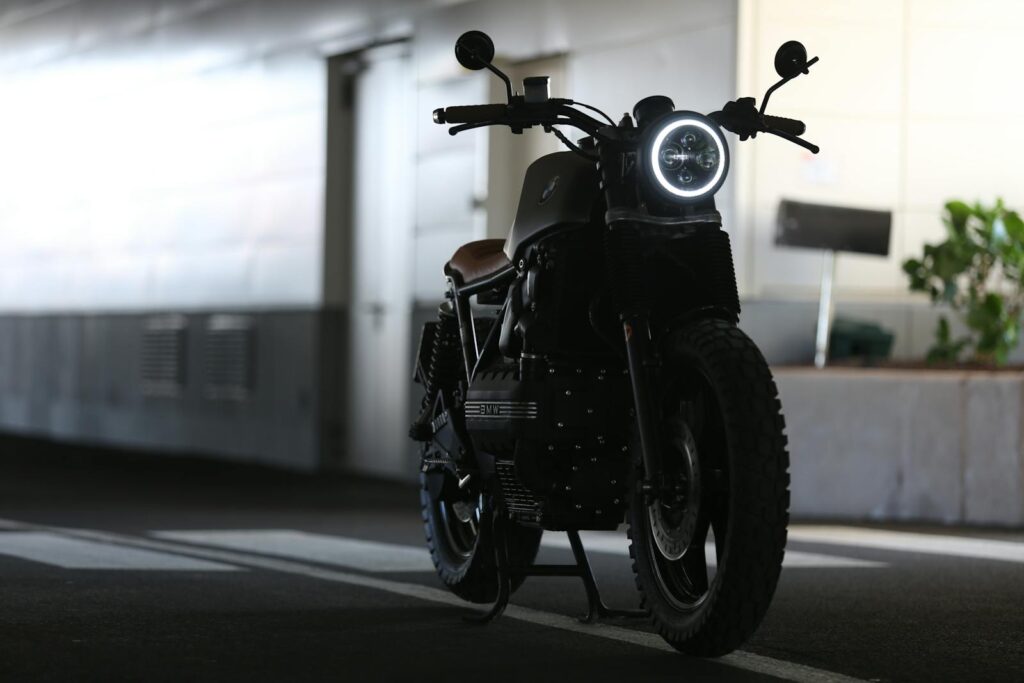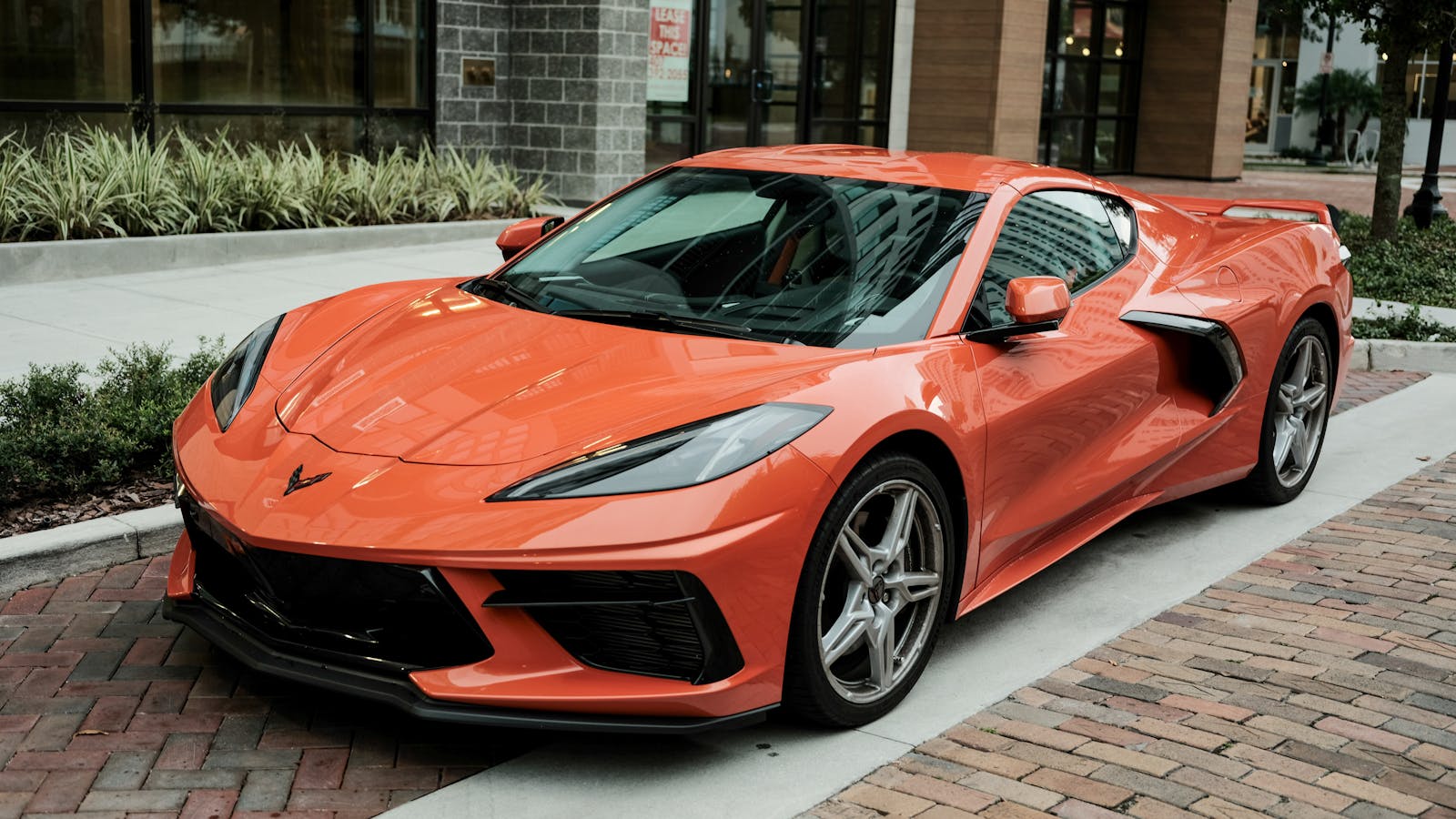
The roar of a finely tuned engine, the gleam of polished chrome – vintage cars hold an undeniable allure. They are rolling pieces of history, symbols of passion, and often, the embodiment of a dream. For many enthusiasts, restoring a classic to its former glory is a romantic pursuit, a journey into automotive heritage. Yet, beneath that captivating exterior lies a stark reality known only to the unsung heroes of the automotive world: the mechanics.
These professionals face intricate challenges, rusted bolts, and perplexing electrical gremlins accompanying these beautiful machines. Their garages become battlegrounds where sentimentality clashes with practical engineering. As seasoned experts like David Long, the “Car Wizard,” and Chris Pyle of JustAnswer attest, not every classic is a joy to work on. In fact, some are notorious nightmares.
So, what happens when a stunning vintage silhouette rolls into the shop, triggering a collective groan? We’re diving deep into cars that turn heads but make mechanics pull their hair out. From beloved retro icons to luxurious beasts, we’ll explore why some visually appealing vehicles of yesteryear earn a permanent spot on the “most dreaded to fix” list for pros. Get ready to discover that sometimes, true beauty is only skin deep, and what lies beneath can be a genuine mechanical headache.
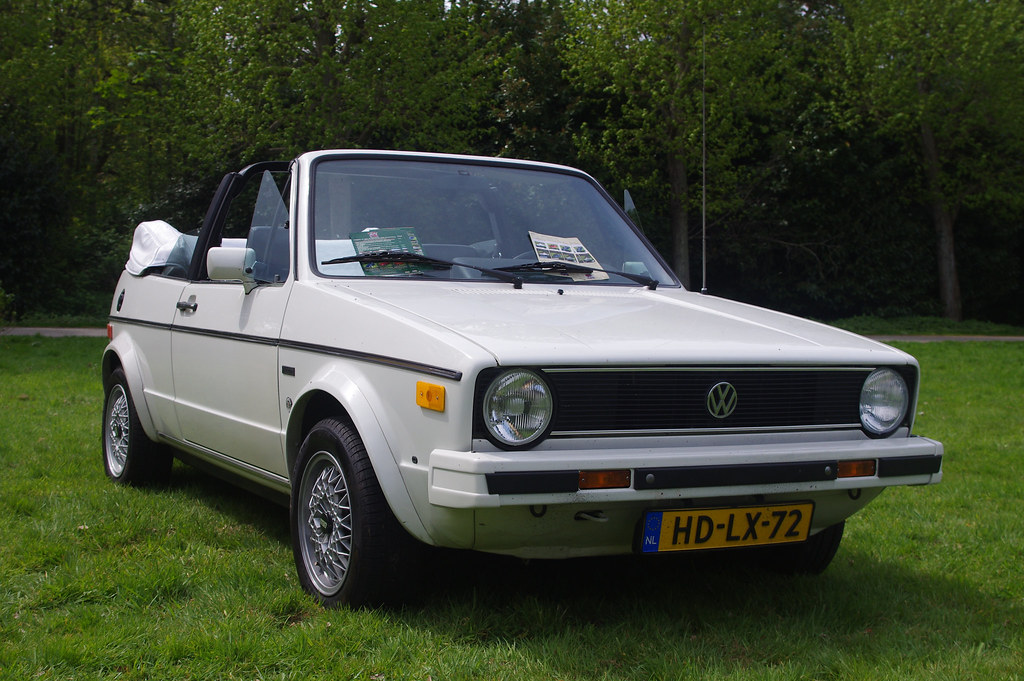
1. **The Resurrected Rabbit: A Landlord’s Ordeal**The Volkswagen Rabbit Cabriolet, known in North America, holds a respected place among retro car enthusiasts for its open-air charm. However, for mechanics like David Long of Car Wizard, this allure quickly fades when tackling a project left to languish. He recounted a specific 1980s model, brought by his landlord, which had sat for a decade, utterly worn out and non-running. Long, usually shying from restorations, found himself “between a rock and a hard place.”
The extensive time off the road meant countless components were beyond repair. While original Golfs are esteemed, age brings rust, which alone can cost thousands to repair. This problem compounds quickly, demanding immense patience and budget, far beyond typical maintenance.
Despite the uphill battle and significant funding from the landlord, Long restored the Rabbit after a full year. His experience serves as a stark warning: “sentimental value can lead to many spending much more on fixing it.” What begins as a charming classic can swiftly become an all-consuming financial and mechanical odyssey for both owner and mechanic.
Car Model Information: 2022 Maserati Levante GT
Name: Volkswagen Golf
Caption: Volkswagen Golf Mk8
Manufacturer: Volkswagen
Production: 1974–present
Class: Compact car
Predecessor: Volkswagen Beetle
Successor: Volkswagen ID.3
Alt: grey car (hatchback)
Categories: 1980s cars, 1990s cars, 2000s cars, 2010s cars, 2020s cars
Summary: The Volkswagen Golf () is a compact car/small family car (C-segment) produced by the German automotive manufacturer Volkswagen since 1974, marketed worldwide across eight generations, in various body configurations and under various nameplates – including as the Volkswagen Rabbit in the United States and Canada (Mk1 and Mk5), and as the Volkswagen Caribe in Mexico (Mk1).
The original Golf Mk1 was a front-engined, front-wheel drive replacement for the air-cooled, rear-engined, rear-wheel drive Volkswagen Beetle. Historically, the Golf is Volkswagen’s best-selling model and is among the world’s top three best-selling models, with more than 35 million units sold as of 2019.
Initially, most Golfs were hatchbacks, with the three-door version being somewhat more popular than the five-door. Other variants include an estate (Variant, from 1993), convertible (Cabriolet or Cabrio, from 1979), and a Golf-based saloon called the Jetta, Vento (from 1992), or Bora (from 1999). The Golf covers economy to high-performance market segments.
The Golf has won awards, including the World Car of the Year in 2009, with the Mk6 and in 2013 with the Mk7. Along with the Renault Clio and the Vauxhall Astra, the Golf is one of only three cars to have won European Car of the Year twice, in 1992 and 2013. The Golf has made the annual Car and Driver 10Best list multiple times. The Mk7 won the Motor Trend Car of the Year award in 2015, and the Mk1 GTI also won the award in 1985. The Mk4 won for the best-selling car in Europe in 2001.
Get more information about: Volkswagen Golf
Buying a high-performing used car >>>
Brand: Volkswagen Model: Rabbit Cabriolet
Price: $35,799 Mileage: 16,241 mi.
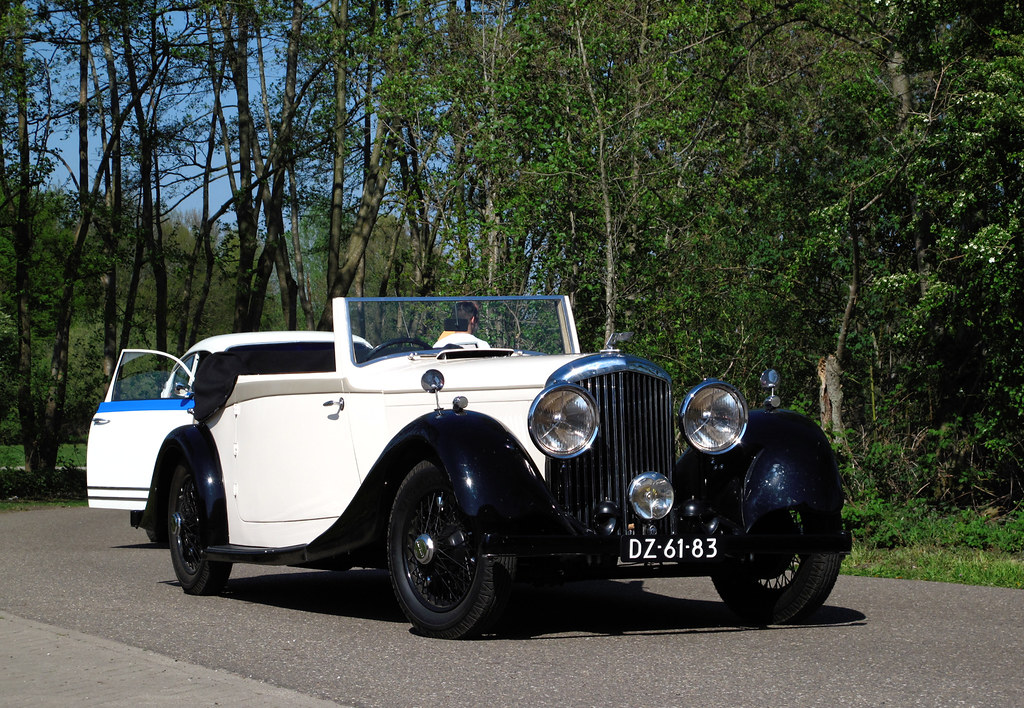
2. **The Imported Luxury: A Bentley’s Lingering Scars**Bentley, synonymous with unparalleled luxury, promises effortless power and refined elegance. Owning an older model feels like holding automotive aristocracy. Yet, even these magnificent machines can harbor deep-seated mechanical woes, particularly those with a challenging past, as David Long discovered with a Bentley imported from Russia.
Long’s disdain for the job was clear. He knew that “as much money as he’s going to put into this, it’s never going to be a viable car, it’s never going to be a good car.” This wasn’t just about complex mechanics; it was the fundamental viability of the vehicle itself, compromised by its history. High-end classics, especially those with problematic pasts, make true perfection an elusive and incredibly expensive goal.
Ultimately, they got the car running, but Long called it a “pyrrhic victory.” He concluded it “still was never a beautiful, perfect Bentley again, and it probably never will be again.” This underscores a professional cynicism: for some luxury cars, no effort can fully erase neglect, turning an icon into a bottomless pit of repairs that never truly satisfies.
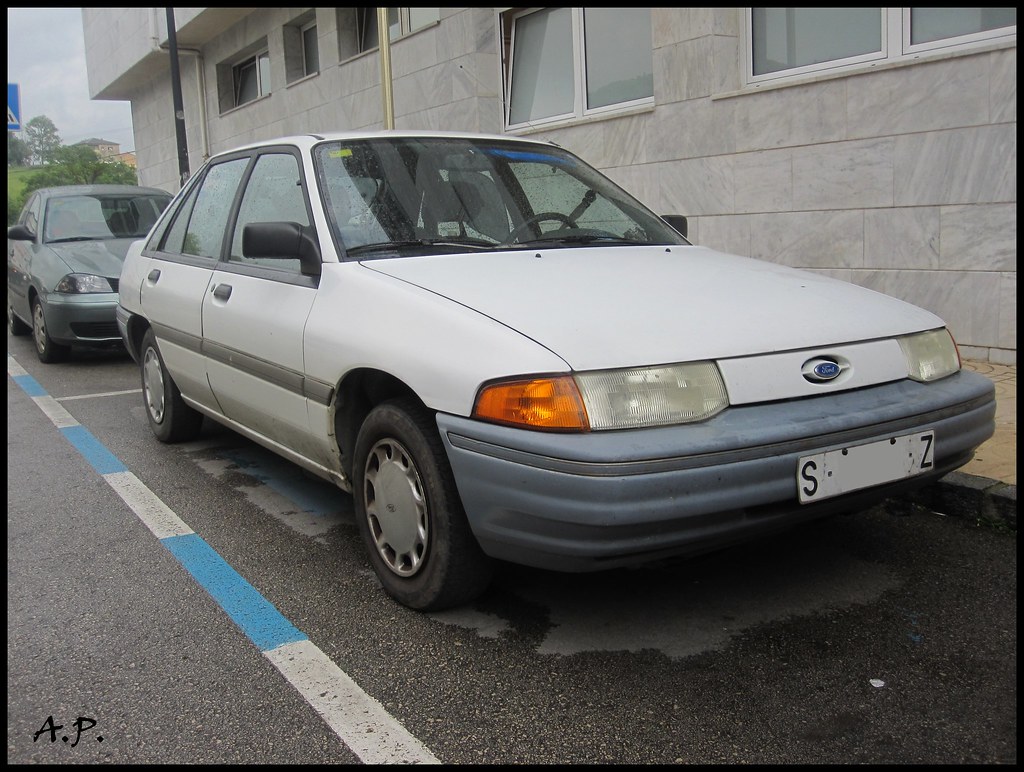
3. **The Rust-Ridden Relic: David Long’s 1992 Ford Escort Nightmare**The Ford Escort, once a ubiquitous, economical workhorse, now highlights how time and rust transform vehicles into mechanic’s nightmares. David Long vividly illustrated this with a 1992 Escort hatchback, the memory of which caused him distress due to its extensive corrosion.
Long described its grim state: “This thing was rusted so badly you could put your hand in the sub-frame, it was like a tunnel, and if you tapped on the bottom of the car too hard with your finger pieces would fall off.” This was structural disintegration, making repairs a Sisyphean task. He even compared it to “The Flintstones’ car where your feet can touch the ground,” signifying its dilapidation.
Despite its near-total disintegration, this Escort was cherished due to immense sentimental value. This conflict between emotional attachment and objective condition is common in auto repair. Professionals often undertake challenging projects, driven by owner sentiment, turning them into thankless, frustrating endeavors.
Car Model Information: 1995 Ford Escort LX 4dr Wagon
Name: Ford Escort
Caption: Ford Escort RS2000 Mark I
Manufacturer: Ford of Europe
Production: January 1968–2004
Class: Compact car
Layout: Front-engine, rear-wheel-drive layout
Related: Ford Orion
Predecessor: Ford Anglia
Successor: Ford Focus,Ford Laser
Categories: 1970s cars, 1980s cars, 1990s cars, 2000s cars, All articles with unsourced statements
Summary: The Ford Escort is a small family car that was manufactured by Ford of Europe from 1968 until 2004. In total, the six generations were spread across three basic platforms: the original, rear-wheel-drive Mk.1/Mk.2 (1968–1980), the “Erika” front-wheel-drive Mk.3/Mk.4 (1980–1992), and the final CE-14 Mk.5/Mk.6 (1990–2002) version. Its successor, the Ford Focus, was released in 1998, but the final generation of Escort was phased out gradually, with the panel van version ending production in 2002 in favour of the Ford Transit Connect.
The Escort was frequently the best-selling car in Britain during the 1980s and 1990s. More than 4.1 million Escorts of all generations were sold there over a period of 33 years.
In 2014, Ford revived the Escort name for a car based on the second-generation Ford Focus, sold on the Chinese market.
Get more information about: Ford Escort (Europe)
Buying a high-performing used car >>>
Brand: Ford Model: Escort
Price: $2,995 Mileage: 189,208 mi.
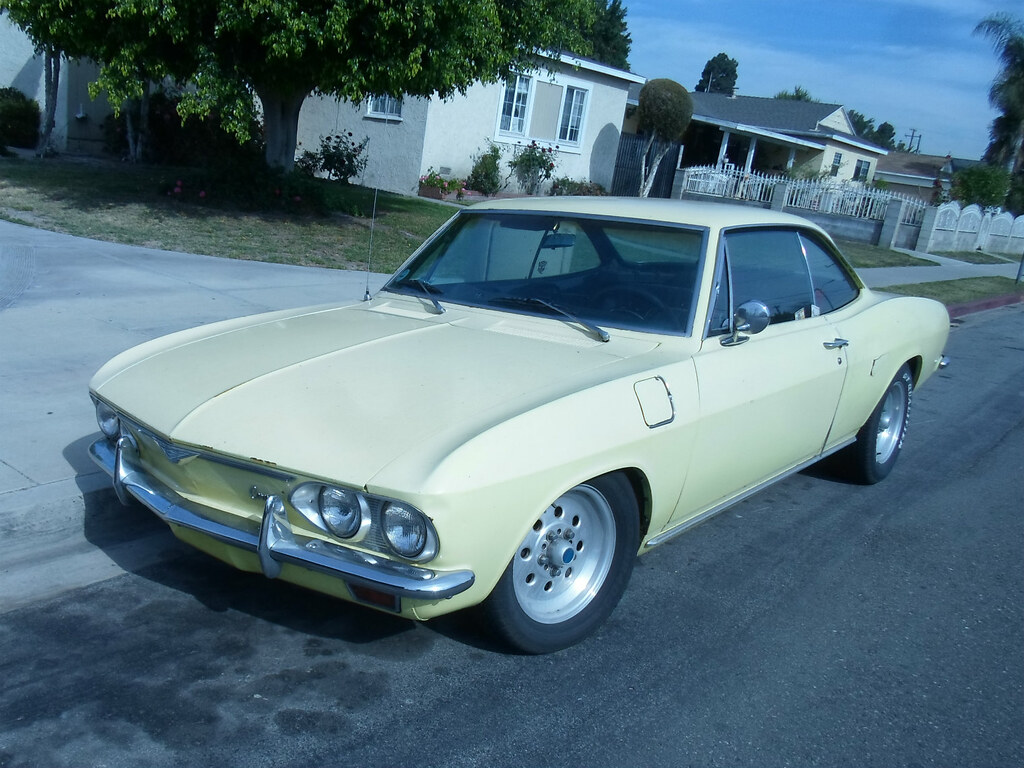
4. **The Fallen Icon: Chevrolet Corvair’s Restoration Limbo**The Chevrolet Corvair, once a celebrated, innovative rear-engine American automobile, captured imaginations with its unique engineering and distinctive styling. However, as Chris Pyle, a veteran mechanic at JustAnswer, notes, time has not been kind to its restoration legacy. It “now sits in restoration limbo.”
Pyle observes a waning public interest: “No one now thinks they are cool like they were back then.” This shift in collector preferences leaves the Corvair out of favor, reducing the market for restored examples. The aesthetic is often forgotten in favor of more conventional classics.
Practical hurdles further complicate restoration, mainly parts scarcity. Pyle states, “parts are slim picking.” Without a steady supply of components, even minor repairs become Herculean, demanding custom fabrication and driving up time and cost. For mechanics, the Corvair is “more headache than heritage,” a challenging project for dwindling returns.
Car Model Information: 1964 Chevrolet Corvair Monza
Caption: 1964 Chevrolet Corvair Monza
Name: Chevrolet Corvair
Manufacturer: Chevrolet
Production: 1960–1969
Platform: GM Z platform
Chassis: Unibody
ModelYears: 1960–1969
Assembly: United States,Kansas City, Missouri,Oakland, California,Van Nuys,St. Louis,Flint, Michigan,Belgium,Canada,Mexico,South Africa,Switzerland,Venezuela
Class: Compact car
Successor: Chevrolet Vega
Layout: Rear-engine, rear-wheel-drive layout
Categories: All Wikipedia articles written in American English, All articles lacking in-text citations, All articles needing additional references, All articles with dead external links, All articles with specifically marked weasel-worded phrases
Summary: The Chevrolet Corvair is a rear-engined, air-cooled compact car manufactured and marketed by Chevrolet over two generations between 1960 and 1969. The Corvair was a response to the increasing popularity of small, fuel-efficient automobiles, particularly the imported Volkswagen Beetle and American-built compacts like the Rambler American and Studebaker Lark.
The first generation (1960–1964) was offered as a four-door sedan, two-door coupe, convertible, and four-door station wagon. A two- and four-door hardtop and a convertible were available second-generation (1965–1969) variants. The Corvair platform was also offered as a subseries known as the Corvair 95 (1961–1965), which consisted of a passenger van, commercial van, and pickup truck variant. Total production was approximately 1.8 million vehicles from 1960 until 1969.
The name “Corvair” was first applied in 1954 to a Corvette-based concept with a hardtop fastback-styled roof, part of the Motorama traveling exhibition. When applied to the production models, the “air” part referenced the engine’s cooling system.
A prominent aspect of the Corvair’s legacy derives from controversy surrounding the handling of early models equipped with rear swing axles, articulated aggressively by Ralph Nader’s Unsafe at Any Speed but tempered by a 1972 Texas A&M University safety commission report for the National Highway Traffic Safety Administration (NHTSA) which found that the 1960–1963 Corvair possessed no greater potential for loss of control in extreme situations than contemporary compacts.
To better counter popular inexpensive subcompact competitors, notably the Beetle and Japanese imports such as the Datsun 510, GM replaced the Corvair with the more conventional Chevrolet Vega in 1970.
Get more information about: Chevrolet Corvair
Buying a high-performing used car >>>
Brand: Chevrolet Model: Corvair
Price: $29,988 Mileage: 74,787 mi.
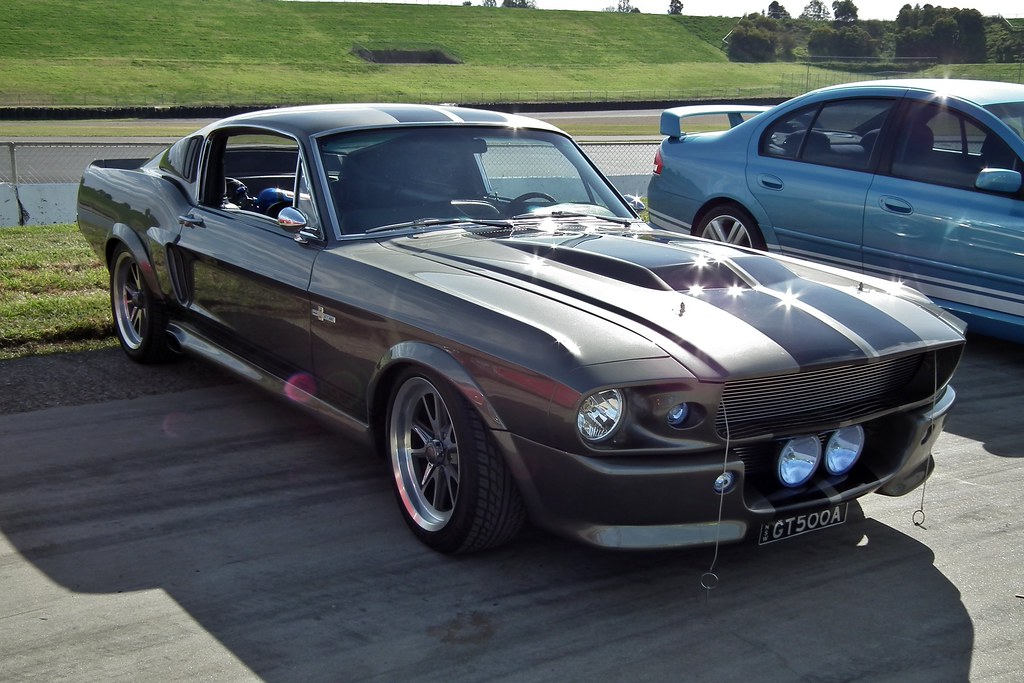
5. **The Misunderstood Pony: Ford Mustang II’s Identity Crisis**The Ford Mustang name evokes raw American muscle and thrilling performance. Yet, the Mustang II represents a controversial chapter, often viewed with disdain by purists and mechanics. While it bore the revered badge, its aesthetic and performance struggled to live up to its heritage, a fact underscored by experts like Chris Pyle.
Pyle’s assessment is candid: “They don’t look that great and they are weak.” This cuts deep for a “pony car” expected to exude power and visual appeal. The Mustang II often finds itself in a difficult position, caught between evolving regulations and the high expectations of its fanbase.
Its inherent “weakness” often leads owners to “put a bigger motor in it.” This modification, while boosting power, raises a fundamental question about classic car restoration. Pyle pointedly asks, “What’s the point of preserving history if you have to fundamentally alter it?” This makes it a frustrating project, navigating what the car was versus what owners wish it to be, often at significant cost.
Car Model Information: 2022 Maserati Levante GT
Name: Second generation
Caption: Ford Mustang II coupe
Aka: Ford Mustang II , Ford T5 (in Germany)
Class: Pony car,Subcompact car
Production: 1973–1978
ModelYears: 1974–1978
Predecessor: Ford Mustang (first generation)
Successor: Ford Mustang (third generation)
Assembly: Unbulleted list
Layout: Front-engine, rear-wheel-drive layout
BodyStyle: coupé,hatchback
Related: Ford Pinto,Ford Pinto
Manufacturer: Ford Motor Company
Engine: ubl
Transmission: ubl
Wheelbase: cvt
Length: cvt
Width: cvt
Height: cvt
Designer: Buck Mook, Dick Nesbitt
Categories: All articles with dead external links, All articles with unsourced statements, Articles with dead external links from April 2024, Articles with permanently dead external links, Articles with short description
Summary: The second-generation Ford Mustang, marketed as the Ford Mustang II, is a two- or three-door, four-passenger, front-engine/rear-drive pony car manufactured and marketed by Ford from 1973 until 1978. Introduced in September 1973 for the 1974 model year, the Mustang II arrived roughly coincident with the oil embargo of 1973 and subsequent fuel shortages. Developed under Lee Iacocca, it was an “entirely new kind of pony car.” Ford “decided to call it Mustang II, since it was a new type of pony car designed for an era of high gas prices and fuel shortages.”
The Mustang II was 490 lb (222 kg) lighter and almost 19 in (483 mm) shorter than the 1973 Mustang, and derived from the subcompact Pinto platform. While sharing a limited number of driveline components with the Pinto, the Mustang II employed an exclusive subframe, isolating its front suspension and engine mount subframe. The steering used a rack-and-pinion design.
Named Motor Trend’s 1974 Car of the Year and reaching over 1.1 million sales over four years of production, the Mustang II is noted simultaneously for both its marketing prescience and strong sales – while criticized as having abandoned essential aspects of the Mustang heritage and described, in a retrospective after 40 years since its introduction, as embodying the Malaise era.
Get more information about: Ford Mustang (second generation)
Buying a high-performing used car >>>
Brand: Ford Model: Mustang II
Price: $35,799 Mileage: 16,241 mi.
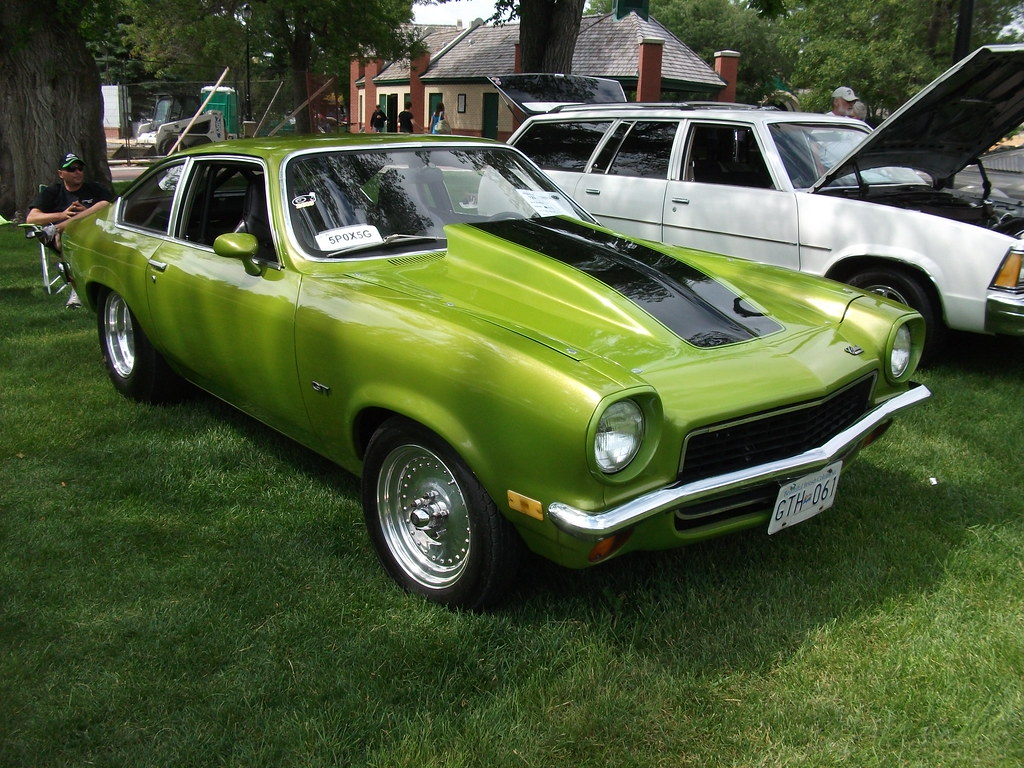
6. **The Unappreciated Effort: The Chevrolet Vega’s Restoration Trap**Chevrolet’s Vega, an early 1970s compact, arrived with promise but quickly earned a reputation for engine problems and rust. Despite its troubled past, some owners still envision a pristine, restored example. However, veteran mechanic Chris Pyle issues a stern warning about the financial realities of such an endeavor.
Pyle’s concern centers on the abysmal return on investment. He cautioned, “You can spend thousands to make it a peach, but it will not turn heads, and you will end up with an overpriced car you cannot sell.” The Vega’s inherent market appeal remains stubbornly low, regardless of restoration quality.
For mechanics, this presents a dilemma: they can restore it, but know the client is likely losing money. The Vega “represents the perfect storm of high restoration costs and low market appeal.” Every hour and expensive part adds to a sum unlikely to be recouped, leaving a sense of futility. It’s a personal project, often a significant financial sacrifice, not a sound investment.
Car Model Information: 1976 Chevrolet Vega
Name: Chevrolet Vega
Caption: 1971 Chevrolet Vega
Aka: Vega 2300
Manufacturer: Chevrolet
Production: 1970–1977
ModelYears: 1971–1977
Assembly: Lordstown, Ohio
Predecessor: Chevrolet Corvair
Successor: Chevrolet Monza
Class: Subcompact car
BodyStyle: notchback,hatchback,station wagon,Panel van
Layout: FR layout
Platform: GM H platform (RWD)
Engine: {{cvt,2.3,L,cuin,0,Chevrolet 2300 engine
Transmission: manual transmission,4-speed manual,overdrive (mechanics),Torque-Drive 2-speed Powerglide requiring manual shifting,Powerglide,Turbo-Hydramatic
Wheelbase: cvt
Length: cvt
Width: cvt
Height: cvt
Weight: cvt
Related: Pontiac Astre,Chevrolet Monza,Pontiac Sunbird#First generation (1976–1980),Buick Skyhawk#First generation (1975–1980),Oldsmobile Starfire#Second generation (1975–1980)
Designer: Bill Mitchell (designer)
Categories: 1970s cars, All articles needing additional references, All articles with unsourced statements, Articles needing additional references from July 2023, Articles with short description
Summary: The Chevrolet Vega is a subcompact automobile manufactured and marketed by GM’s Chevrolet division from 1970 until 1977. Available in two-door hatchback, notchback, wagon, and sedan delivery body styles, all models were powered by an inline four-cylinder engine designed specifically for the Vega, with a lightweight aluminum alloy cylinder block. The Vega first went on sale in Chevrolet dealerships on September 10, 1970. Variants included the Cosworth Vega, a short-lived limited-production performance version introduced spring 1975.
The Vega received the 1971 Motor Trend Car of the Year. Subsequently, the car became widely known for a range of problems related to its engineering, reliability, safety, propensity to rust, and engine durability. Despite numerous recalls and design upgrades, Vega’s problems tarnished its reputation and that of General Motors. Production ended with the 1977 model year.
The car was named for Vega, the brightest star in the constellation Lyra.
Get more information about: Chevrolet Vega
Buying a high-performing used car >>>
Brand: Chevrolet Model: Vega
Price: $33,000 Mileage: 82,344 mi.
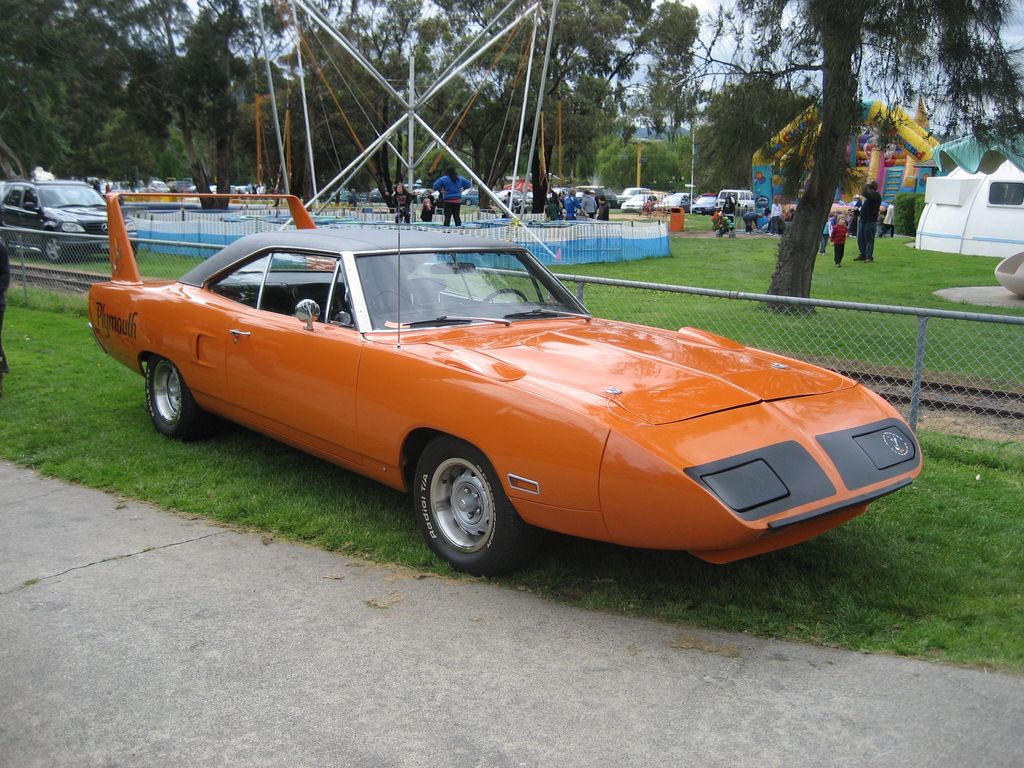
7. **The Showroom Showoff: Plymouth Superbird’s Fleeting Fame**The Plymouth Superbird, with its iconic high rear wing and aerodynamic nosecone, is an unmistakable symbol of American muscle and NASCAR dominance. “Super cool,” as Chris Pyle describes it, this aerodynamic icon truly turns heads, embodying a specific era’s aggressive, purposeful beauty. It’s an undeniable showstopper.
However, Pyle quickly adds a crucial caveat: its appeal is often “only for a minute.” People are captivated, eager to “look and touch them,” but this rarely translates into serious buying interest. The sheer cost of acquiring and maintaining such a rare, specialized machine proves a significant barrier for most enthusiasts.
Potential buyers “are not thrilled about sinking 20-30k on one to show off.” This substantial investment is often disproportionate to practical enjoyment or resale potential. For mechanics, a Superbird is a double-edged sword: magnificent engineering, but with specialized repair challenges and astronomical part costs. It’s a car to admire, but few bear the financial burden of extensive maintenance.
The journey into the hidden mechanical labyrinths of seemingly desirable vintage cars doesn’t end with the first seven. As we delve deeper, it becomes abundantly clear that the challenges faced by automotive professionals are diverse and often unexpected, stretching from classic muscle to modern electric marvels. Each of these machines, while possessing an undeniable aesthetic appeal or groundbreaking technology, harbors specific quirks that transform routine maintenance into a formidable quest, testing the patience and expertise of even the most seasoned mechanics.
These vehicles illustrate a broader truth in the automotive world: what appears magnificent to the eye can conceal a world of complexity and frustration for those charged with keeping them running. The battle between outward beauty and internal mechanical integrity continues, revealing why some of the most striking cars earn a permanent spot on a mechanic’s ‘do not touch’ list. It’s a testament to the engineering challenges of different eras, where innovation sometimes outpaced reliability, or where sheer complexity became its own worst enemy.
8. **The Intricate Luxury: BMW X3’s Electrical Maze**The BMW X3, with its sleek design and reputation for a smooth ride, often draws owners seeking a blend of luxury and performance. Its sophisticated engineering promises a premium driving experience, fitting seamlessly into the modern landscape of high-end SUVs. However, for mechanics, the arrival of an X3 in the garage often triggers a familiar sense of dread, signaling an impending encounter with its notoriously intricate electrical system.
This isn’t just about a loose wire or a simple fuse. The BMW X3 is known for an “intricate, expensive electrical system” that frequently succumbs to issues like “malfunctioning sensors and an underperforming battery.” These aren’t minor inconveniences; they can manifest in a cascade of problems, from erratic dashboard lights to critical system failures, demanding specialized diagnostic tools and a deep understanding of complex wiring schematics. The sheer interconnectedness of its electronic components means that troubleshooting can be a time-consuming, frustrating endeavor.
Mechanics openly “cringe when the BMW X3 pulls into the garage” because resolving these issues typically involves more than just a quick fix. Each repair often requires meticulous investigation, tracing faults through layers of sophisticated circuitry. For the owner, this translates directly into significant financial strain, as they “prepare to empty your wallet each time it requires service,” highlighting the steep cost of maintaining such high-tech luxury when its complex systems inevitably falter.
Car Model Information: 2020 BMW X3 PHEV xDrive30e
Name: BMW X3
Manufacturer: BMW
Production: 2003–present
Class: Compact luxury crossover SUV
BodyStyle: SUV
Caption: BMW X3 (G45)
Categories: 2010s cars, All-wheel-drive vehicles, All articles with bare URLs for citations, Articles with bare URLs for citations from July 2025, Articles with short description
Summary: The BMW X3 is a compact luxury crossover SUV manufactured by BMW since 2003, based on the BMW 3 Series platform. BMW markets the car as a Sports Activity Vehicle, the company’s proprietary descriptor for its X-line luxury vehicles.
The first-generation X3 was designed by BMW in conjunction with Magna Steyr of Graz, Austria—who also manufactured all X3s under contract to BMW. BMW manufactured the second-generation X3 at their Spartanburg plant in South Carolina, United States. Starting with the third generation, BMW South Africa’s Rosslyn plant began production of the X3, alongside the Spartanburg plant, after the facility underwent a major upgrade to prepare for the X3 production, replacing the long-running 3 Series production in the plant. About 76,000 units will be manufactured there annually.
The car was the first mid-size, premium SUV on the market. In 2008, BMW started competing with the Mercedes-Benz GLK-Class (renamed GLC-Class since 2016), and numerous other SUVs in this segment. The X3 is smaller than the X5 and X6, and bigger than the X1 and the X2.
The battery electric model is sold as the BMW iX3.
Get more information about: BMW X3
Buying a high-performing used car >>>
Brand: BMW Model: X3
Price: $27,799 Mileage: 36,951 mi.
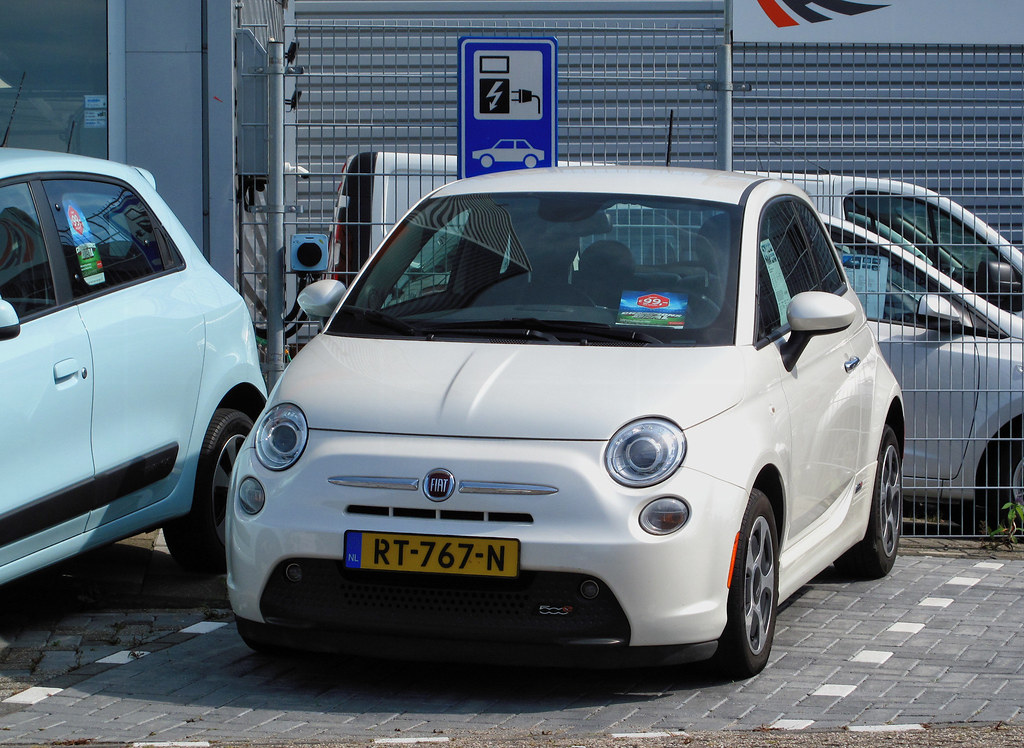
9. **The Compact Conundrum: Fiat 500’s Persistent Problems**The Fiat 500, a car celebrated for its compact size, distinctive retro styling, and nimble city driving, exudes an undeniable quirky charm. It evokes images of Italian flair and effortless urban navigation, making it a popular choice for those seeking a unique and personality-filled vehicle. Yet, beneath its undeniably cute facade lies a mechanical reality that proves anything but charming for automotive technicians.
Despite its diminutive stature, the Fiat 500 presents a disproportionate level of difficulty for mechanics, earning it the label of “compact yet frustrating.” Its most prominent pain points include “frequent transmission issues and electrical failures.” The transmission, particularly, can be a recurring source of headaches, leading to inconsistent performance and costly repairs that overshadow the car’s initial affordability. These aren’t isolated incidents but rather systemic vulnerabilities that demand repeated attention.
These persistent issues “drive mechanics up the wall” because they often require extensive labor and specialized knowledge, especially for a car that, on the surface, appears straightforward. The constant need for transmission work or the hunt for elusive electrical gremlins can consume valuable shop time and quickly inflate repair bills. While the Fiat 500 may be a “quirky city car” in appearance, its mechanical temperament often suggests that prospective owners might “want to think twice before choosing this one.”
Car Model Information: 2012 FIAT 500 Lounge
Name: Fiat 500
Caption: 1970 Fiat 500 L
Aka: Puch 500
Manufacturer: Fiat Automobiles
Production: 1957–1975,3,893,294 units
Assembly: Turin,Desio
Designer: Dante Giacosa
Class: City car
BodyStyle: ubl
Layout: Rear-engine, rear-wheel drive layout
Doors: Suicide door,Car door#Conventional
Related: Autobianchi Bianchina,NSU/Fiat Weinsberg 500,Vignale Gamine,Autobianchi Giardiniera
Engine: Cubic centimetre,499 cc I2,594 cc I2
Transmission: Manual transmission
Wheelbase: {{convert,1840,mm,in,1,abbr=on
Abbr: on
Length: 2970 mm
Width: 1320 mm
Height: 1320 mm
Weight: 499 kg
Predecessor: Fiat 500 “Topolino”
Successor: Fiat 126,Fiat 500 (2007)
Sp: uk
Categories: 1960s cars, 1970s cars, All articles with unsourced statements, Articles containing Italian-language text, Articles with short description
Summary: The Fiat 500 (Italian: Cinquecento, pronounced [ˌtʃiŋkweˈtʃɛnto]) is an economy / city car that was manufactured and marketed by Fiat Automobiles from 1957 until 1975. It was sold as a two-door semi-convertible or saloon car and as a three-door panel van or estate car.
Launched as the Nuova (new) 500 in July 1957, as a successor to the 500 “Topolino”, it was an inexpensive and practical small car. Measuring 2.97 metres (9 feet 9 inches) long, and originally powered by a rear-mounted 479 cc two-cylinder, air-cooled engine, the 500 was 24.5 centimetres (9.6 inches) smaller than Fiat’s 600, launched two years earlier, and is considered one of the first purpose-designed city cars.
In 1959, Dante Giacosa received a Compasso d’Oro industrial design prize for the Fiat 500. This marked the first time a Compasso d’Oro was awarded to an automotive manufacturer.
Get more information about: Fiat 500
Buying a high-performing used car >>>
Brand: Fiat Model: 500
Price: $5,950 Mileage: 91,698 mi.
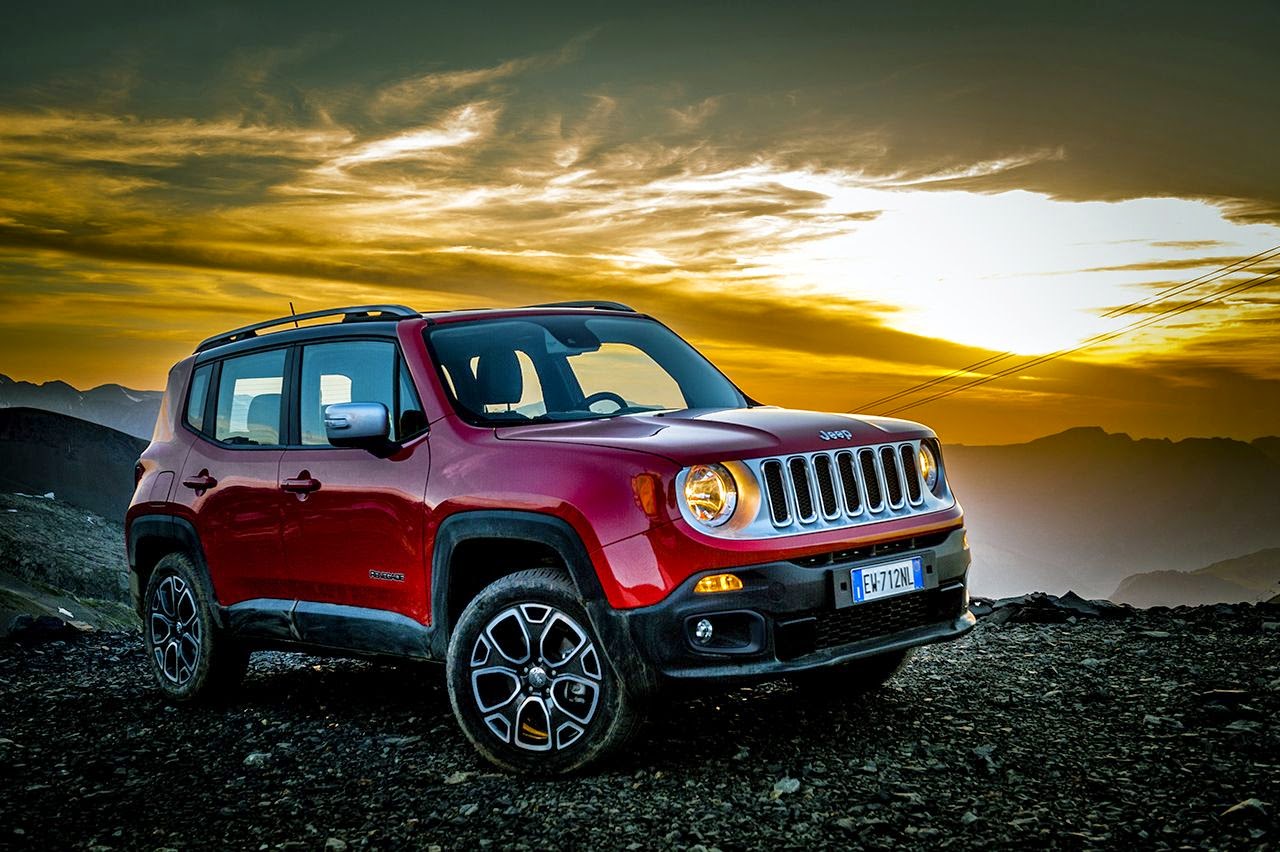
10. **The Renegade’s Rough Ride: Jeep Renegade’s Hidden Troubles**The Jeep Renegade captivates with its rugged, off-roading aesthetics, promising adventure and capability in a compact SUV package. Its bold styling suggests an indomitable spirit, hinting at robust construction capable of tackling challenging terrains. This visual appeal, however, often belies a set of internal issues that transform its adventurous spirit into a mechanical headache for those tasked with its upkeep.
Mechanics quickly discover that the Renegade’s tough exterior is merely skin deep, as it’s plagued by “frequent problems like faulty wiring and malfunctioning gearboxes.” Electrical issues, in particular, can be notoriously difficult to diagnose and resolve, manifesting in a range of unpredictable malfunctions that challenge even experienced technicians. These wiring complexities, coupled with recurring gearbox troubles, make the Renegade a consistent source of frustration.
The inherent unreliability of these key systems means the Jeep Renegade is undeniably “a headache to repair.” Its design, while visually appealing, often leads to an understanding that “inside, it’s full of trouble.” For a vehicle that projects an image of resilience, its propensity for significant electrical and transmission faults makes it a mechanically challenging proposition, demanding patience and expertise from mechanics, and significant financial outlays from owners.
Car Model Information: 2022 Jeep Renegade Trailhawk
Name: Jeep Renegade
Manufacturer: Jeep
Production: 2014–present
ModelYears: 2015–2023 (US & Canada),2015–present (Mexico)
Assembly: ubl
Designer: Jeremy Glover and Ian Hedge
Class: Subcompact crossover SUV
BodyStyle: SUV
Layout: Front-engine, front-wheel-drive layout
Platform: GM Fiat Small platform
Related: Fiat 500X,Fiat 500L,Fiat Tipo (2015),Fiat Toro
Engine: ubl
Motor: 45 kW
Abbr: on
Transmission: Fiat Powertrain Technologies,Fiat Powertrain Technologies,Fiat Powertrain Technologies,Fiat Powertrain Technologies,Aisin,Fiat Powertrain Technologies,ZF Friedrichshafen
Battery: lithium-ion battery
Drivetrain: PHEV
Wheelbase: 101.2 in
Length: 166.6 in
Width: 71.1 in
Height: 66.5 in
Weight: convert
Sp: us
Categories: 2020s cars, All-wheel-drive vehicles, All articles with bare URLs for citations, Articles with PDF format bare URLs for citations, Articles with bare URLs for citations from August 2024
Summary: The Jeep Renegade is a subcompact crossover SUV produced by Stellantis under their Jeep marque. It was first shown to the public in March 2014 at the Geneva Motor Show and production started in late August of that year. The Renegade was the smallest vehicle currently marketed by Jeep, until the arrival of the Avenger. It slots between the Avenger and the Compass. It is based on the FCA Small Wide 4×4 platform which is also shared with other FCA models, including from Fiat and Alfa Romeo brands.
The Renegade comes as standard with front-wheel drive, with optional four-wheel drive systems Active Drive I and Active Drive Low, both of which are paired with Jeep’s Selec-Terrain System.
Get more information about: Jeep Renegade
Buying a high-performing used car >>>
Brand: Jeep Model: Renegade
Price: $21,143 Mileage: 26,358 mi.

11. **The M-Class Mystery: Mercedes-Benz’s Costly Comfort**The Mercedes-Benz M-Class stands as a testament to automotive luxury, offering a blend of sophisticated design, comfortable interiors, and a prestigious badge. Owners are drawn to its promise of effortless power and a refined driving experience, expecting the unparalleled quality associated with the brand. Yet, this high-end allure often comes with a hidden cost, particularly when its complex engineering begins to show signs of wear and tear, presenting formidable challenges for mechanics.
Among its most notorious issues is an air suspension system that is “notorious for breaking down.” When this happens, the smooth, comfortable ride for which the M-Class is known quickly deteriorates, demanding immediate and often complex intervention. Coupled with this are “constant electrical malfunctions,” which can affect everything from infotainment systems to critical engine components. These issues are not only frequent but also notoriously intricate to diagnose and repair due to the vehicle’s sophisticated integrated systems.
For mechanics, the sight of a Mercedes-Benz M-Class pulling into the shop often prompts a collective “groan.” The specialized nature of its components, combined with the difficulty in accessing them and the sheer cost of replacement parts, ensures that any necessary repair is likely to be “costly.” This confluence of high-tech failure and expensive fixes solidifies the M-Class’s reputation as a beautiful but financially demanding vehicle for both its owners and the mechanics who service it.
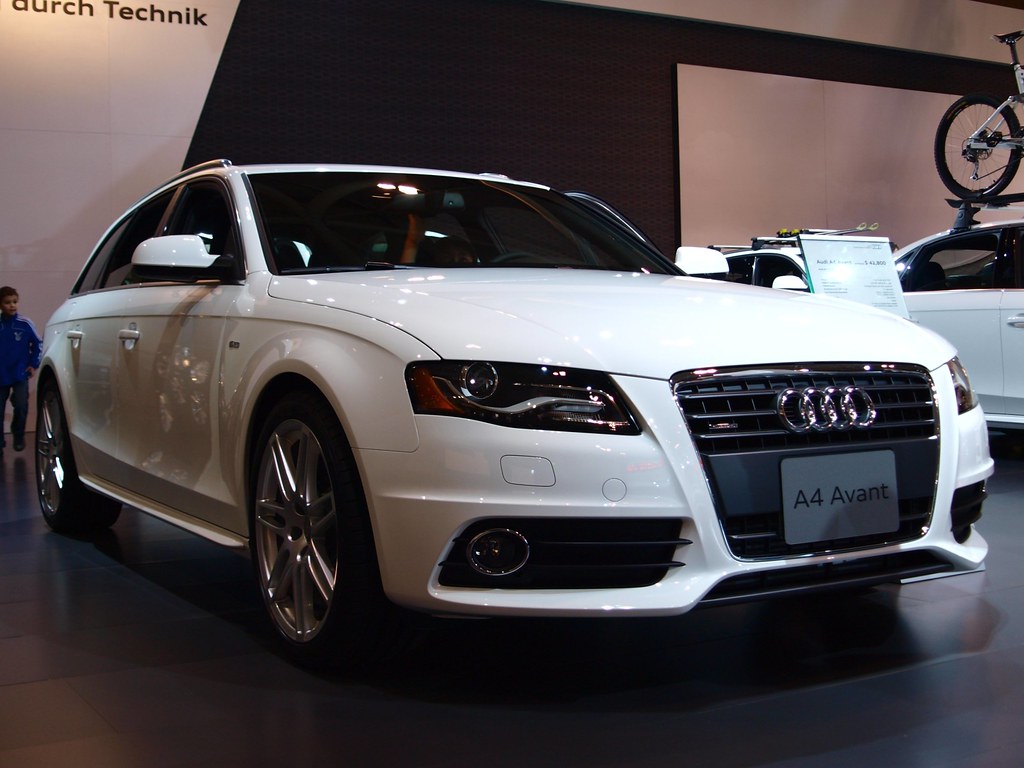
12. **The Audi A4: Style, Sophistication, and Stress**The Audi A4 effortlessly combines style and sophistication, making it a popular choice for those who appreciate refined aesthetics and a dynamic driving experience. Its clean lines and luxurious interior project an image of precision German engineering, suggesting a vehicle built for discerning tastes. However, underneath this polished exterior lies a history of mechanical issues that frequently keep mechanics on their toes, often leading to substantial repair bills.
This seemingly perfect blend of form and function comes with “a long list of mechanical issues.” Mechanics frequently contend with problems such as “oil leaks and turbocharger failures,” which can be time-consuming and expensive to rectify. Furthermore, the A4’s “complicated electrical system” adds another layer of complexity, making diagnostic work a painstaking process. These interwoven issues require a specialized skill set and a methodical approach to truly resolve.
The context states, quite pointedly, that “Audis are the worst to work on,” a sentiment echoed by many professionals. This is not just a casual dislike but a reflection of the intricate design and the difficulty in accessing components, which can turn even routine maintenance into a drawn-out affair. For owners, the promise of style and performance often culminates in a harsh reality where “repair bills stack up quickly,” diminishing the joy of ownership with frequent and costly trips to the service bay.
Car Model Information: 2015 Audi A4 2.0T Premium
Name: Audi A4
Caption: Audi A4 (B9.5; facelift)
Manufacturer: Audi AG
Production: 1994–2025
Assembly: Germany,India,China,Indonesia,Ukraine
Class: Compact executive car
BodyStyle: Sedan (car)
Platform: Volkswagen Group B platform
Layout: Front-engine, front-wheel drive layout
Sp: uk
Predecessor: Audi 80
Successor: Audi A5#Third generation (2024)
Categories: 2000s cars, 2010s cars, 2020s cars, All-wheel-drive vehicles, All articles lacking reliable references
Summary: The Audi A4 is a line of luxury compact executive cars produced from 1994 to 2025 by the German car manufacturer Audi, a subsidiary of the Volkswagen Group. The A4 has been built in five generations and is based on the Volkswagen Group B platform. The first generation A4 succeeded the Audi 80. The automaker’s internal numbering treats the A4 as a continuation of the Audi 80 lineage, with the initial A4 designated as the B5-series, followed by the B6, B7, B8, and the B9.
The B8 and B9 versions of the A4 are built on the Volkswagen Group MLB platform shared with several models and brands across the Volkswagen Group. The Audi A4 automobile layout consists of a front-engine design, with transaxle-type transmissions mounted at the rear of the engine. The cars are front-wheel drive, or on some models, “quattro” all-wheel drive. The A4 is available as a sedan and station wagon. Historically, the second (B6) and third generations (B7) of the A4 also included a convertible version. For the B8 and B9 versions, the convertible, along with a new coupé and 5-door liftback variant, was spun-off by Audi into a new nameplate called the Audi A5.
The B9 generation A4 and A5 will be replaced by B10 version of A5, as part of Audi’s new naming convention.
Get more information about: Audi A4
Buying a high-performing used car >>>
Brand: Audi Model: A4
Price: $11,379 Mileage: 98,606 mi.
Read more about: Look Like a Million Bucks on a Budget: 10 Jaw-Dropping Cars That Offer Luxury Without the Lavish Price Tag
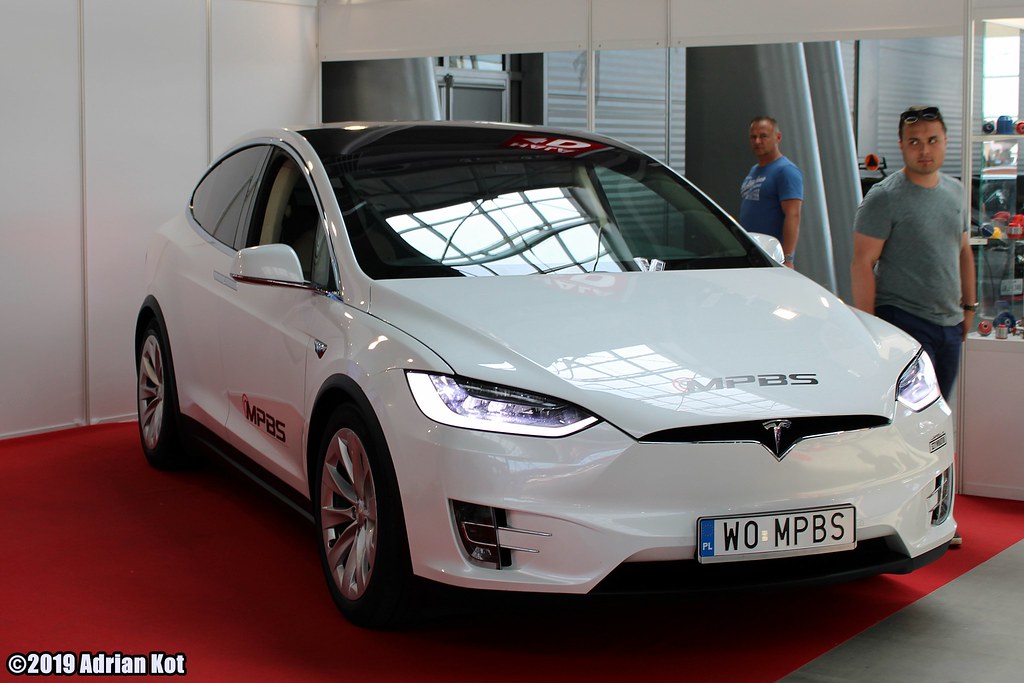
13. **The Electric Enigma: Tesla Model S’s Tech Troubles**The Tesla Model S is undoubtedly a technological marvel, representing the pinnacle of electric vehicle innovation with its breathtaking acceleration, advanced autonomous features, and minimalist, futuristic design. It stands as a symbol of progress, pushing the boundaries of what an automobile can be. Yet, for all its groundbreaking advancements, this electric icon also presents a unique and often daunting set of challenges that can turn it into a true “repair nightmare” for mechanics.
Its reliance on “complex software and electrical systems” means that diagnosing issues often requires specialized, proprietary tools and a deep understanding of its intricate digital architecture. Unlike traditional internal combustion engines, many problems in a Tesla aren’t physical but rather software-driven, making them elusive to conventional diagnostic methods. These systems frequently “lead to major service issues” that can render the vehicle inoperable, demanding highly specific expertise.
The cutting-edge nature of the Model S also means that mechanics face “long wait times for repairs due to the vehicle’s reliance on high-tech components.” Parts are not always readily available, and the specialized training required to work on these vehicles means that only a select few shops are equipped to handle them. This combination of advanced, proprietary technology and logistical hurdles makes the Tesla Model S a formidable, and often frustrating, project for any mechanic.
Car Model Information: 2022 Maserati Levante GT
Name: Tesla Model S
ModelYears: 2013–present
Alt: A front-three quarter view of a gray Model S
Caption: #2016–2019: First major update
Designer: Franz von Holzhausen
Weight: cvt
Height: cvt
Width: cvt
Length: cvt
Wheelbase: cvt
ElectricRange: cvt
Battery: kWh,lithium-ion battery
Motor: Unbulleted list
Transmission: Reduction drive
Related: Tesla Model X
Layout: Rear-motor, rear-wheel drive,Dual-motor, all-wheel-drive,Tri-motor, all-wheel-drive layout
BodyStyle: liftback,sedan (automobile)
Class: Full-size car
Assembly: Unbulleted list
Production: June 2012 – present
Manufacturer: Tesla, Inc.
Sp: us
Chassis: Unibody
Categories: 2020s cars, All-wheel-drive vehicles, All Wikipedia articles written in American English, All articles containing potentially dated statements, Articles containing potentially dated statements from 2025
Summary: The Tesla Model S is a battery-electric, four-door full-size car produced by the American automaker Tesla since 2012. The automaker’s second vehicle and longest-produced model, the Model S has been described as one of the most influential electric cars in the industry. Car and Driver named it one of the best cars of the year in 2015 and 2016. Its various accolades include the Motor Trend Car of the Year Award in 2013.
Tesla started developing the Model S around 2007 under the codename WhiteStar. Initially, Henrik Fisker was appointed as the lead designer for the WhiteStar project; after a dispute with Elon Musk, Tesla’s CEO, Fisker was replaced by Franz von Holzhausen. By 2008, von Holzhausen had designed what would become the production Model S’s exterior. Tesla unveiled a prototype of the vehicle in March 2009 in Hawthorne, California. In 2010, Tesla acquired a facility in Fremont, California, to produce the Model S, which was previously owned by General Motors and Toyota. Series manufacture of the car officially began at the Tesla Fremont Factory in June 2012. Tesla carried out the final assembly for European markets at its facilities in Tilburg, Netherlands, between 2013 and 2021.
The Model S typically uses either one or initially two alternating current induction motors; since 2019, dual-motor versions have used a permanent magnet motor in the front, though the high-performance Model S Plaid’s three motors are permanent magnet units by default. Constructed mostly of aluminum, the Model S shares 30 percent of its components with the Model X—a crossover SUV that was introduced in 2015. The Model S has undergone several updates during its production, the most prominent ones occurring in 2016 and 2021. These updates have usually included modifications to the motor, such as changes to power or torque, revised exterior elements, and refreshed interior features. One such change included the 2015 introduction of Tesla Autopilot—a partial vehicle automation advanced driver-assistance system.
In 2015, the Model S was the world’s best-selling plug-in electric vehicle. In 2012, it was included on Time’s list of the Best Inventions of the Year, and the magazine later included it on its list of the 10 Best Gadgets of the 2010s in 2019. In 2014, The Daily Telegraph described the Model S as a “car that changed the world”. Road & Track argued that, with the introduction of the Plaid and features such as the yoke steering wheel, Tesla managed to turn the Model S into “perhaps one of the worst [cars in the world]”.
Get more information about: Tesla Model S
Buying a high-performing used car >>>
Brand: Tesla Model: Model S
Price: $35,799 Mileage: 16,241 mi.

14. **The Thoroughbred’s Trial: Ferrari 360 Modena’s Hefty Bills**The Ferrari 360 Modena epitomizes speed, style, and unparalleled luxury, standing as a dream machine for automotive enthusiasts worldwide. Its sculpted lines, roaring engine, and pedigree instantly convey an image of peak automotive craftsmanship and thrilling performance. Owning a Ferrari is, for many, the ultimate expression of passion for cars, a symbol of prestige and driving exhilaration. However, this level of exotic engineering comes with a significant caveat when it’s time for maintenance or repair.
For mechanics, the immense privilege of working on such a thoroughbred is often tempered by the sheer complexity and cost of its upkeep. The 360 Modena is particularly known for “clutch issues and complicated gearbox repairs,” which are not just challenging to fix but also incredibly expensive. The precision required for these high-performance components, combined with the specialized tools and expertise needed, ensures that any intervention is a meticulous and time-consuming process.
Indeed, these “complicated gearbox repairs can run into thousands of dollars,” making the cost of ownership a sobering reality for even the most affluent enthusiasts. The context bluntly states, “If you’re not prepared for the hefty repair bills, this beautiful machine might not be for you.” This underscores a fundamental truth about exotic cars: their beauty and performance are inextricably linked to a mechanical intricacy that demands substantial financial commitment and presents a consistently high-stakes challenge for any mechanic.
Car Model Information: 2022 Maserati Levante GT
Name: Ferrari 360
Manufacturer: Ferrari
Production: 1999–2004
ModelYears: 2000–2005
Assembly: Maranello
Designer: Pininfarina (design director: Lorenzo Ramaciotti)
Class: Sports car
BodyStyle: berlinetta
Layout: Longitudinal engine,Rear mid-engine, rear-wheel drive layout
Engine: 3586 cc
Abbr: on
Order: cite web
Transmission: Graziano Trasmissioni,electrohydraulic manual transmission
Wheelbase: 2600 mm
Length: 4477 mm
Width: 1922 mm
Height: 1214 mm
Weight: 3291 lb
Predecessor: Ferrari F355
Successor: Ferrari F430
Categories: 2000s cars, All articles with dead external links, All articles with unsourced statements, Articles with dead external links from April 2024, Articles with permanently dead external links
Summary: The Ferrari 360 (Type F131) is a two-seater mid-engine rear-wheel drive sports car manufactured by Ferrari from 1999 until 2004. It succeeded the Ferrari F355 and was replaced by the Ferrari F430 in 2004.
Get more information about: Ferrari 360
Buying a high-performing used car >>>
Brand: Ferrari Model: 360 Modena
Price: $35,799 Mileage: 16,241 mi.
As we conclude this deep dive into the vehicles that test the limits of mechanical patience, it’s clear that the allure of a great-looking car can often hide a complex, sometimes infuriating, reality. From the rust-eaten relics that challenge an owner’s sentimental value to the cutting-edge electric marvels with their proprietary software, and the luxurious, high-performance beasts with their astronomical repair costs, mechanics consistently face a fascinating spectrum of challenges. These insights, shared by seasoned professionals, serve as a valuable reminder: true beauty, in the automotive world, isn’t always skin deep, and sometimes, the most admired vehicles are also the ones that make the pros groan. Understanding these hidden mechanical narratives allows both enthusiasts and everyday drivers to appreciate the intricate dance between automotive design, engineering, and the invaluable expertise of the mechanics who keep our world moving, one frustrating repair at a time.




